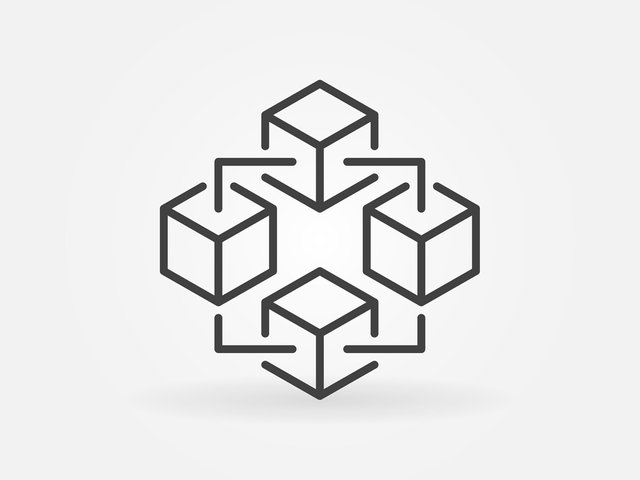Why Blockchain is a great tool for Companies?

No business evolves in a vacuum. Companies develop relationships with other organizations, whether social, commercial or governmental.
The purpose of a business is to create value. But a company will create value by circulating goods or services through this network.
The goods concerned can be of two natures: tangible or intangible.
Tangible goods are all the material goods that you can touch: a car, a house, a DVD, a coin.
In contrast, intangible assets are immaterial. For example, music, films, financial assets, patents, title deeds or identity. With the digitization of our societies, the list is now almost infinite.
Ledgers are responsible for recording the transfer of these goods from one organization to another. When a property is transferred between two organizations, the latter two update their records. For example, when a company transfers real estate to another company, both companies will reflect the sale on their balance sheet. Similarly, the administration will update its various registers (tax, real estate ...), or the banks that will transfer a sum of money from the account of the first company to the second.
The fact that each network entity has its own registry and its own process to update it has many disadvantages. It is initially inefficient since the action is replicated by all members separately. It is then very expensive since each member of the network must devote a number of hours and therefore important means to update these registers. It is finally risky since each member of the network must ensure the security of his systems alone.
If the network uses the blockchain, there is only one register. Each member has a copy of the general ledger that is updated simultaneously each time a block is added to the blockchain. The network, therefore, has a single system, which results in significant time savings and economies of scale.
The different advantages of the blockchain:
- Decentralized: The blockchain is a decentralized database. In other words, all members of the network have a copy of the blockchain in their systems. This feature makes it possible to organize and facilitate the access of all members to information that is always the same for everyone, which increases trust between members. This feature also ensures the security of the latter since to change or remove it, it is necessary that all databases of all members are also changed or canceled.
- Immutability: Once the transactions are added to the blockchain, it is not possible to return to it. The fact that we cannot go back on the transactions adds trust between the members of the network.
- Chronological: The blocks are added one after the other without it being possible to change their order of addition. This feature allows you to keep a history of adding transactions to the blockchain and easily resolve any conflicts between network members.
- Instantaneity: Transactions are signed and added to the database almost instantaneously which, in a large number of cases, saves time and significant operational expenses.
- Finality: means that two transactions cannot be added at the same time to two different blocks. This characteristic, which is not specific to private blockchains, ensures that there is no conflict between the different members of the network.

Bitcoin
DIFFERENCES WITH BITCOIN
The blockchains used for businesses are different from the one on which bitcoin is based.
It is important to understand that bitcoin is a cryptocurrency that works by using a public blockchain, that is to say open to all.
Companies use private blockchains or consortium. The latter propose four major differences:
- Members: members of the blockchain are chosen. Private and consortium blockchains are not open to all, members are chosen and their identity is known. This element is essential because it will allow to apply to the blockchain much lighter and more efficient security procedures than for public blockchain in which the members do not know each other. Consensus mechanisms such as "Pratical Byzantine Fault Tolerance" will be able to replace the very heavy mechanisms of the "Proof of Work".
- Private: it is first possible to make private certain transactions. On a public blockchain, all transactions are accessible to everyone, even if the members' identity is not directly accessible because they are represented by their public address. In private blockchain, it is possible to programme the blockchain so that members only see the transactions that affect them.
- Consensus: the people in charge of adding the blocks to the blockchain are chosen and identified. In public blockchains such as bitcoin or Ethereum, all members can participate in the consensus process without being selected.
- Smart Contracts: smart contracts are not unique to private blockchains. Ethereum for example is a public blockchain on which smart contracts are deployed. In business networks based on a private blockchain or consortium, smart contracts are used to exchange business logic.

Private blockchain
WHY IS BLOCKCHAIN RELEVANT TO BUSINESS?
Given these elements, what are the benefits of blockchain:
- Time Savings: The fact that transactions are instantly added to the blockchain by all members of the network at the same time, can really impact the speed of transactions between members of the same network. For example, a letter of credit can take several days to establish. With a blockchain, it would be exchanged immediately.
- Money Gains: All members update the blockchain at the same time, in other words they all agree on the state of the register they share. This avoids the use of internal and external audits for each network member.
- Limits the risks: Firstly because the registry is decentralized, which implies that all members of the network have a copy. This aspect makes the blockchains more resistant to the risks of cyber attacks. Added to this is the fact that blockchains are protected by very strong cryptographic mechanisms.
On the other hand, there is only one shared register and not a different register for each member, which considerably limits the risk of discrepancies between the different registers.
- Increases trust between the members of the network, since they are constantly in agreement on the state of the transactions that they realize between them.
EXAMPLES
Shared databases
This type of project can be a good way to start creating an organization network around a shared database.
Each member retains their current systems, but adds information to the blockchain directly or through a third party.
Each network member controls who can access this data. The configurations are multiple. These data can be contained in a single set or in several subgroups. A subgroup for each member for example.
These shared databases make it possible to gather all the information that a network wishes to share in a secure and very efficient way. This allows network members to access this data in real time.
Supply chains
The airbus parts supply chain is an excellent example of an inter-industry organization in which blockchain adds value.
This organization allows to save on the blockchain all the parts and their origins, the program that created them, and their replacement. In other words, the blockchain offers a centralized database of all the constituent elements of an aircraft as well as the moment at which they were added to the aircraft.
This database is therefore a proof of the origin of the parts, the way they were made and their assembly process. This makes it possible to immediately detect the damaged parts and to deduce the origin of the problem.
It is also possible to imagine that in the near future smart contracts will automatically order the missing parts.
What works for a complex environment like the assembly of an airplane also works on a smaller scale. For example, it is likely that all the foods in your refrigerator will be soon saved and plotted on a blockchain. In the same way, smart contracts can automatically recommend food when it has been consumed.
EVERLEDGER is an example of a supply chain based on a blockchain. It aims to avoid any pollution of the diamond supply chain by diamonds from parallel markets.
Audit
Some institutions (bank or real estate) may have an interest in including all their property portfolio on a blockchain, to ensure that the valuation of the latter is accessible by all parties with interest and in a secure manner.
The blockchain offers here the possibility to have a real-time view of the entire portfolio and its valuation which encourages managers to better manage it and understand the risks.
The blockchain is powered by transactions by the different systems of the organization. The latter therefore has a chronology and tamper-proof log which greatly facilitates the internal audit and saves time and money.
Letter of credit
They are indispensable for international exchanges. They have always existed, but as we have already mentioned, they are often complex to implement. The blockchain allows to replace the signature process, which usually takes several days, by an exchange of consents almost simultaneous. For example, the triggering element of the letter of credit could be the electronic signature of the customs officer who scanned an RFID chip attached to the goods being transported.

Blockchain
START WITH BLOCKCHAIN
Blockchain is still an emerging technology. It's actually hard to get used to the technology and find a really useful use of the blockchain. Therefore, it is recommended to start with simple and easy-to-implement projects to move towards more complex projects. The following projects can give an idea of progression:
1 - A compliance register: create a shared database allowing to have a real time view of all data while enjoying the benefits of the blockchain: immutability, purpose, timeline, security. These properties make it easier to access data by the various interested parties: auditors, business, regulator. Note that this first step can be done at a single company level.
2 - A shared registry by a Consortium: the next step is to extend the database beyond the enterprise. The idea is to include certain members of the industry in which we are located in order to facilitate exchanges and the sharing of registers.
3 - Exchange of assets: during this stage, the consortium members start exchanging assets through smart contracts. These assets are at this stage only information.
4 - Creation of a market: exchange of assets between the members
Posted from my blog with SteemPress : http://www.blockchains-expert.com/en/blockchain-for-companies/